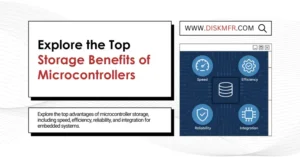In today’s data-driven world, the demand for high-performance computing has skyrocketed. Data centers are constantly seeking ways to optimize their operations and meet the ever-increasing computational requirements. Two crucial components of any data center are the Graphics Processing Unit (GPU) servers and Central Processing Unit (CPU) servers. Understanding the differences between these server types is essential for making informed decisions regarding their implementation in data centers. This article aims to shed light on the distinctions between GPU servers and CPU servers, their architecture, performance, use cases, and cost considerations.
1. Introduction
Data centers serve as the backbone of numerous industries, facilitating data storage, processing, and analysis. Both GPU servers and CPU servers play significant roles in these data center operations, albeit with distinct characteristics. While CPUs have traditionally dominated general-purpose computing, GPUs have emerged as specialized accelerators, revolutionizing computationally intensive tasks. Understanding the divergent functionalities and performance capabilities of these server types is paramount to harnessing their potential effectively.
2. Definition of GPU Servers
GPU servers are computing systems equipped with specialized graphics processing units, designed to handle complex graphical computations and parallel processing tasks efficiently. Originally developed for rendering high-quality graphics in the gaming and entertainment industries, GPUs have evolved into highly parallel processors with massive computational power. Modern GPU servers employ multiple GPUs in a single system, allowing for massive parallelism and accelerated processing.
3. Definition of CPU Servers
CPU servers, on the other hand, are built around central processing units, which serve as the brain of a computer system. CPUs excel at serial processing, executing instructions in a sequential manner. They are optimized for general-purpose computing and excel at single-threaded tasks requiring high instruction throughput. CPU servers are capable of handling a wide range of tasks, from everyday computing to complex data processing.
4. Architecture and Components
GPU servers and CPU servers differ significantly in their architecture and underlying components. While both types of servers contain CPUs, the key distinction lies in the presence of GPUs in GPU servers. GPUs consist of thousands of cores, each capable of executing multiple instructions simultaneously. This parallel architecture allows for the concurrent processing of a large number of data points, making them ideal for tasks such as machine learning, deep learning, and scientific simulations.
In contrast, CPU servers typically feature fewer cores, but each core is generally more powerful and optimized for sequential processing. CPUs often incorporate features such as cache memory, instruction pipelining, and branch prediction to maximize performance on single-threaded tasks. This architecture makes CPU servers well-suited for tasks that require high clock speeds and strong single-threaded performance, such as database management and web hosting.
5. Processing Power
The processing power of GPU servers and CPU servers differs significantly. GPU servers have a clear advantage when it comes to handling highly parallelizable tasks. With their large number of cores, GPUs can process multiple threads and data points simultaneously, resulting in accelerated performance. This makes them highly efficient for tasks that can be divided into smaller, independent computations. Industries such as machine learning, scientific simulations, and video rendering greatly benefit from the immense processing power offered by GPUs.
On the other hand, CPU servers excel in tasks that require strong single-threaded performance. While they may have fewer cores compared to GPUs, CPUs are optimized for sequential processing, executing instructions in a linear fashion. This makes them well-suited for tasks that rely on complex instruction execution and require high clock speeds. CPU servers are commonly used for web hosting, database management, and everyday computing tasks.
It’s important to note that the choice between GPU servers and CPU servers depends on the specific requirements of the workload. If the workload can be effectively parallelized, such as in machine learning algorithms or simulations, GPU servers will deliver exceptional performance. Conversely, tasks that heavily rely on single-threaded performance, like certain database operations, will benefit more from CPU servers. (Types of Proxy Servers: Enhance Your Internet Experience)
6. Parallel Processing vs. Serial Processing
One of the key distinctions between GPU servers and CPU servers lies in their processing methodologies. GPUs excel at parallel processing, where multiple tasks or computations are executed simultaneously. This parallelism allows for faster data processing and accelerated performance, especially in tasks that can be divided into smaller, independent units. On the other hand, CPUs are optimized for serial processing, executing instructions sequentially and focusing on single-threaded performance. While CPUs may have fewer cores, they are better suited for tasks that require strong single-threaded performance and complex instruction execution.
7. Performance and Efficiency
When it comes to performance and efficiency, GPU servers have the upper hand in certain types of workloads. Due to their parallel architecture and the massive number of cores, GPUs can process large amounts of data simultaneously, resulting in an accelerated performance for tasks such as machine learning algorithms, scientific simulations, and data-intensive computations. However, it’s important to note that not all applications can effectively leverage GPU acceleration. Tasks that are inherently serial or require heavy inter-core communication may perform better on CPU servers.
CPU servers, with their optimized architecture for sequential processing, excel in tasks that heavily rely on single-threaded performance. These include tasks like web hosting, database management, and transaction processing, where the ability to quickly process instructions in a sequential manner is crucial. Additionally, CPUs have the advantage of being highly compatible with a wide range of software applications, making them a versatile choice for various workloads.
8. Use Cases for GPU Servers
GPU servers have become increasingly popular in recent years due to their exceptional performance in certain domains. Some notable use cases for GPU servers (Data Center Trends: NVIDIA’s Financial Report Unveiled) include:
① Machine Learning and Artificial Intelligence:
GPU servers are extensively used for training and inference tasks in machine learning and artificial intelligence (AI). The parallel processing capabilities of GPUs greatly accelerate the training process for deep neural networks and enable real-time inference in AI applications. (AI Data Centers: Arm CEO Warns of Huge US Energy Use!)
② Scientific Simulations:
Tasks such as computational fluid dynamics, molecular dynamics simulations, and weather forecasting require substantial computational power. GPU servers, with their ability to handle massively parallel processing, offer significant speedups for these simulations, allowing scientists to analyze complex data and make accurate predictions.
③ Cryptocurrency Mining:
The mining of cryptocurrencies often involves solving complex mathematical problems. GPU servers, with their high processing power and parallel architecture, are well-suited for cryptocurrency mining, providing efficient and faster mining operations compared to CPU servers.
9. Use Cases for CPU Servers
While GPU servers excel in certain domains, CPU servers continue to be the go-to choice for many applications. Here are some common use cases for CPU servers:
① Web Hosting:
CPU servers are widely used for web hosting services, as they offer excellent compatibility and performance for running web applications, serving web pages, and managing databases. The ability of CPUs to handle concurrent connections and process instructions sequentially makes them an ideal choice for web hosting environments.
② Database Management:
Databases require reliable and efficient processing power to handle large volumes of data and complex queries. CPU servers, with their strong single-threaded performance, are well-suited for database management systems, ensuring speedy data retrieval, indexing, and query processing.
③ Content Delivery Networks (CDNs):
CDNs play a crucial role in delivering web content efficiently to end users across the globe. CPU servers are commonly used in CDNs to manage the routing, caching, and delivery of content, ensuring optimal performance and reduced latency.
10. Scalability and Flexibility
Scalability and flexibility are key considerations when selecting server types for data centers. GPU servers offer excellent scalability in terms of parallel processing power. As data center workloads continue to grow, additional GPUs can be added to the server infrastructure, increasing the overall processing capabilities. This scalability allows data centers (3 Engineers Fight Server Crisis: Azure Data Center Outage on Aug.30th, 2023) to handle increasingly complex tasks without compromising performance.
CPU servers, on the other hand, offer scalability in terms of single-threaded performance and compatibility with a wide range of software applications. Data centers can easily scale CPU server resources by adding more servers to their infrastructure, accommodating growing computational demands.
In terms of flexibility, CPU servers have the advantage of being compatible with a vast array of software and operating systems. This flexibility enables data centers to run a diverse range of applications without compatibility issues. GPU servers, although highly efficient for parallel processing tasks, may require specialized software or programming frameworks to fully utilize their capabilities.
11. Cost Considerations
Cost considerations play a crucial role in the decision-making process for data centers. While GPU servers offer exceptional performance for parallel processing tasks, they tend to be more expensive than CPU servers. GPUs are specialized hardware components that require a higher initial investment and may consume more power, leading to increased operational costs. Additionally, not all workloads can effectively utilize GPU acceleration, which may result in the underutilization of resources and inefficient cost allocation.
CPU servers, being more general-purpose and widely available, are typically more cost-effective for tasks that do not heavily rely on parallel processing. They offer a balance between performance and affordability, making them a cost-efficient choice for a broad range of applications.
12. Future Trends
Looking ahead, the future of data center computing is likely to involve a combination of GPU and CPU servers, with a focus on workload optimization and hybrid architectures. Data centers will continue to leverage the strengths of GPU servers for parallel processing tasks such as machine learning, AI, and scientific simulations. At the same time, CPU servers will remain essential for single-threaded performance and compatibility with a diverse range of applications.
Emerging technologies, such as field-programmable gate arrays (FPGAs) and application-specific integrated circuits (ASICs), may further shape the landscape of data center computing. These specialized accelerators offer unique advantages for specific workloads and will likely be integrated into data center architectures alongside GPU and CPU servers.
13. Conclusion
In conclusion, GPU servers and CPU servers are distinct in their architecture, processing capabilities, and use cases within data centers. GPU servers excel in parallel processing tasks, offering exceptional performance for machine learning, scientific simulations, and graphics-intensive applications. On the other hand, CPU servers provide strong single-threaded performance and compatibility with a wide range of software, making them ideal for web hosting, database management, and general-purpose computing.
When deciding between GPU servers and CPU servers for data centers, it’s important to carefully evaluate the specific requirements of the workload and consider factors such as processing power, scalability, flexibility, and cost. A balanced approach that combines the strengths of both server types may be the optimal solution for achieving high-performance computing in data center environments.
14. FAQs
Q: Can GPU servers be used for all types of applications?
A: GPU servers are best suited for applications that can effectively utilize parallel processing, such as machine learning, scientific simulations, and graphics rendering. However, not all applications can benefit from GPU acceleration.
Q: Are CPU servers becoming obsolete with the rise of GPU servers?
A: No, CPU servers still play a crucial role in data centers due to their strong single-threaded performance and compatibility with a wide range of applications. They are particularly suitable for tasks like web hosting, database management, and general-purpose computing.
Q: Are GPU servers more expensive than CPU servers?
A: Generally, GPU servers tend to be more expensive than CPU servers due to their specialized hardware and parallel processing capabilities. However, the cost difference may vary depending on the specific requirements and configurations.
Q: Can GPU and CPU servers be used together in a data center?
A: Absolutely. Many data centers employ hybrid architectures that combine GPU and CPU servers to optimize performance and accommodate diverse workloads. This approach allows organizations to leverage the strengths of both server types effectively.
Q: What are the future trends in data center computing?
A: The future of data center computing is likely to involve a combination of GPU and CPU servers, with a focus on workload optimization and hybrid architectures. Emerging technologies like FPGAs and ASICs may also play a significant role in shaping the data center landscape.

Recommended Reading:








